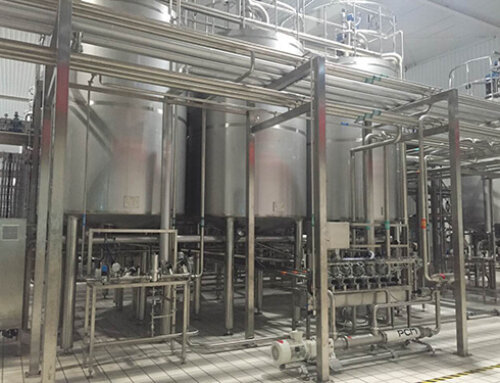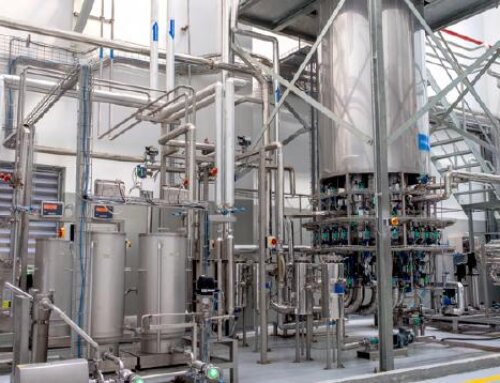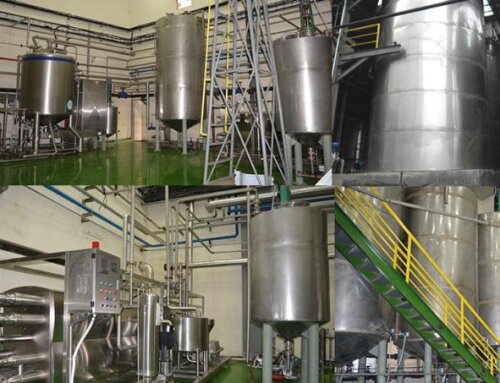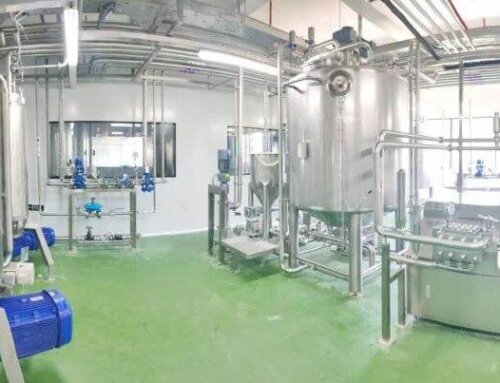Dosing System Overview
The automatic inline dosing device is to integrate the dosing tank, the metering pump (diaphragm pump) and the automatic control system, installs them on one frame base, and connects the outlet of the metering pump with the dosing pipeline and the metering box. The inlet and outlet are connected with the water inlet pipe, etc., and the power supply of the control cabinet and the signal of the detection instrument is sent to the control cabinet to start and put into operation.
Fully automatic dosing equipment is widely used in electric power, petroleum, chemical industry, metallurgical industry, environmental engineering, water treatment, food processing and other fields.
The dosing device accurately configures the solutions of various solid and liquid chemicals through different process designs and then uses the metering pump to accurately dose them to meet various design requirements, such as fruit cleaning, descaling, deoxygenation, coagulation, acid, alkali dosing, etc.
The dosing process can be operated manually, or through various electrical appliances and instruments such as PC, magnetic flap level gauge, PH meter, stroke controller, frequency converter, etc., to make the dosing device realize automatic control.

Dosing System feature
- Manual, semi-automatic, fully automatic, and remote control methods are available.
- The dosing tank can be made of PE, PP, carbon steel (Q235), and stainless steel according to client requirements.
- Italian SEKO metering pump ensures the accuracy of the dosing device, Intelligent instruments adopt to America famous brand.
- Precisely configure the solutions of various solid and liquid chemicals, and then use the metering pump to accurately dose them to meet various design requirements, or provide the parameters of the added chemicals (name, concentration, temperature, density, viscosity, corrosiveness, etc.)

Dosing System Application In Liquid Food And Beverage Processing
Dosing system in Water treatment system
The water treatment system often uses municipal water, surface water or groundwater as raw water, in order to improve the treatment efficiency of the subsequent deionization unit, certain chemicals are dosed to the pretreatment to achieve a certain purpose. In RO water treatment system, commonly used chemicals are coagulant PAC (polyaluminum chloride), disinfectant NaClO (sodium hypochlorite), reducing agent NaHSO3 (sodium bisulfite), caustic soda NaOH (sodium hydroxide), etc.
PAC: In the beverage water system, in order to improve the processing performance of the filtration unit, PAC dosing is usually set at the inlet of the filtration unit. The PAC liquid chemical tank is provided by the operator, which is regularly added to the PAC dosing device on site by the operator, and then added to the pipeline at the inlet of the filter unit by the electric diaphragm pump at a concentration of 0.1 × 2 mg/L, the design frequency of the PAC dosing device is generally less than the 2-week dosage, It is recommended to configure a pipeline static mixer when dosing the PAC, which can improve the mixing efficiency.
NaClO: The dosage of sodium hypochlorite solution is generally controlled by the PID chain with the subsequent residual chlorine sensor. The concentration is controlled at 0.3~0.5mg/L. Because too low concentration will have the risk of microbial growth, while too high concentration will lead to excessive consumption of subsequent reducing agent (sodium bisulfite solution) and even oxidation of RO device. A residual chlorine sensor can also be considered at the outlet of the raw water tank to monitor the residual chlorine concentration, where the residual chlorine concentration is generally controlled at not less than 0.3 mg/L.
pipeline static mixer to improve the mixing efficiency of sodium hypochlorite solution and raw water. The design of the mixer should consider factors such as the viscosity, density, flow rate and pressure of the liquid. The dosing amount of sodium hypochlorite solution depends on the design dosing position, raw water quality and on-site debugging and verification. Generally, if the residual chlorine concentration in the tap water supply is less than 0.3mg/L, a sodium hypochlorite solution dosing device can be considered.
NaHSO3: The RO membrane manufacturer will recommend the residual chlorine concentration of RO in the membrane (generally not higher than 0.1mg/L). Exceeding this concentration will seriously affect the performance and life of the RO membrane. Therefore, sodium bisulfite (NaHSO3) solution is often used in water treatment systems as a reducing agent for residual chlorine in the water.
NaOH: Controlling the pH value of the RO inlet between 7.5 and 8.5 will obtain an ideal salt removal rate. NaOH solution is commonly used in RO system dosing to raise the pH of RO feed water. NaOH is often added to dosing devices in two forms: solid NaOH and NaOH solution. The former needs to be added to the on-site dosing device according to the dilution amount and concentration; the latter is provided by a liquid dosing tank, which is regularly added by the operator and added to the system by an electric diaphragm pump.

CIP automatic concentrated acid and alkali dosing device
The dosing tank is made of SUS316L, the tank volume is about 100-300L, During CIP cleaning, dilute the solution to 1%-3%. When CIP is passivation, the concentration of the cleaning solution is 5%-7%, and the cleaning solution needs to be replaced once a week. Both the concentrated acid and the concentrated lye are dosed to the acid tank and the lye tank through the diaphragm pump.

Color protectant dosing when fruit crushing
It is including dissolving tank(300L, SUS304, single layer with agitator) and one mechanical metering pump. Usually dosing VC into fruits such as apple, banana, and mango during fruit crushing to prevent the fruit from oxidation and color changing.

Enzyme preparations dosing for fruit juice and fruit puree processing
Some pulp enzymes, pectinase, amylase, cellulase, etc. can be added to juice or pulp to help degrade starch and insoluble solids in fruit, improve juice yield and clarify juice. The system also includes SUS304 dosing tank, metering pump and pipeline inline static mixer.
Cleaning agent dosing in fruit and vegetable washing system
Sodium chloride, sodium bicarbonate, sodium carbonate, sodium citrate, phosphoric acid, and ethanol can be used as the cleaning agent during fruit and vegetable washing processing. These cleaning agents can effectively remove pesticides, microorganisms and dirt remaining on the surface of fruits. The dosing system can be installed beside the bubble washing tank when fruit cleaning.




